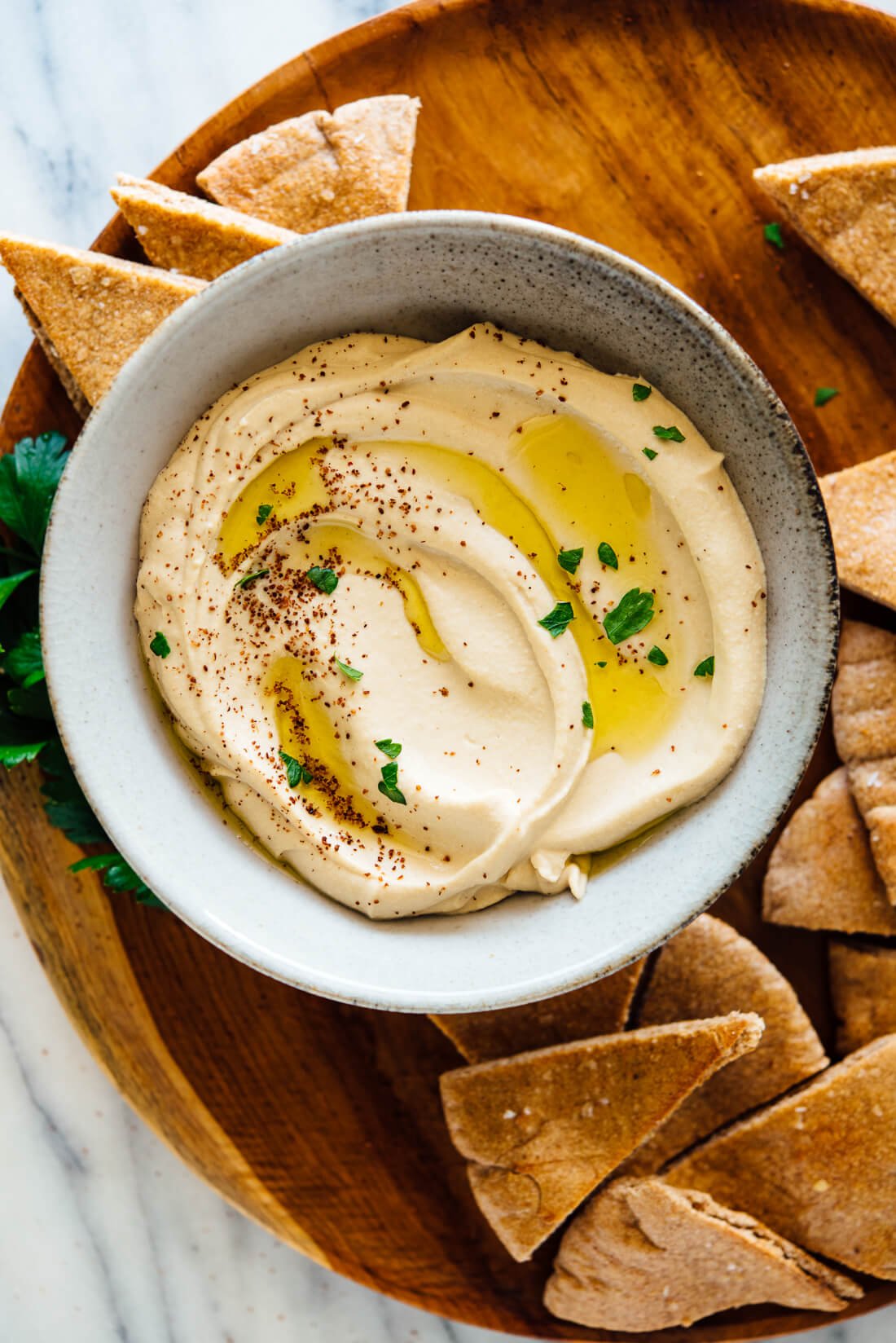Comment on The Best Hummus by Cookie and Kate
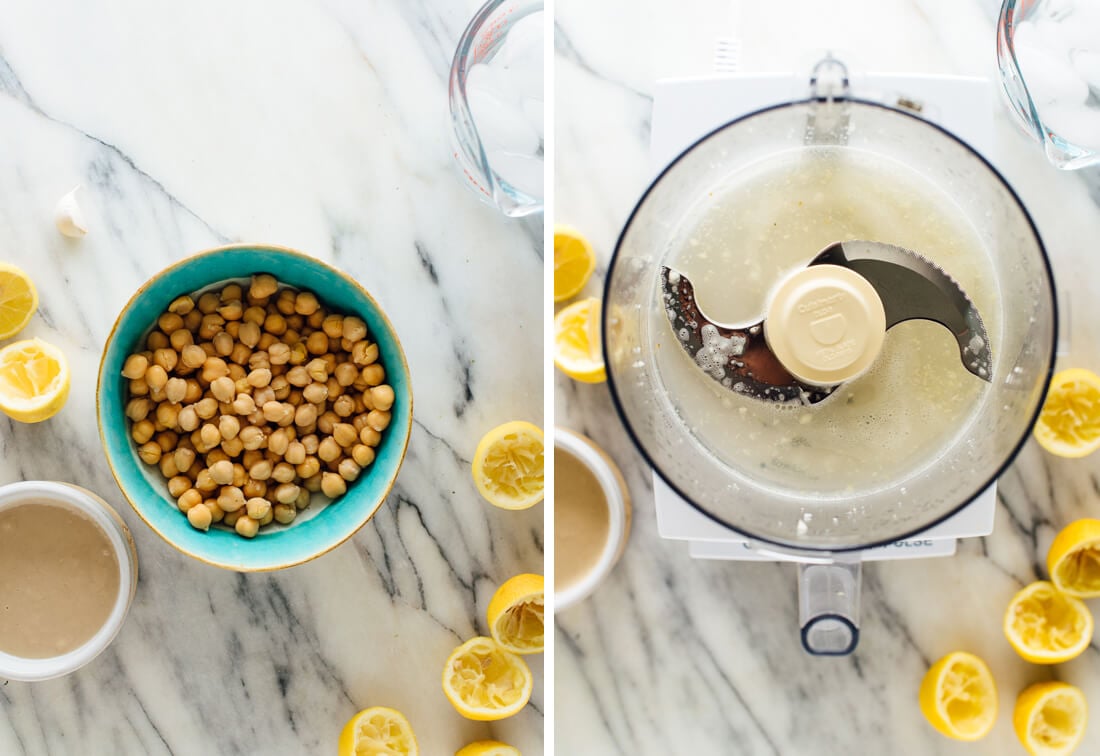
I went home determined to learn how to make magnificently creamy hummus. First, I took the fancy flavorings out of my other hummus recipes to make plain hummus. It was dense, a little gritty, and harshly garlicky. I was so disappointed.
Next, I went to Google and opened up a million tabs to learn everything about hummus. You know me. Ten hummus attempts later, I’m ready to share all of my hummus tips and tricks with you.

The internet at large raves that an Israeli chef named Michael Solomonov makes the very best hummus. It’s so good that Bon Appetit named his hummus their 2015 Dish of the Year. That’s some serious hummus.
Solomonov’s secret? He uses chickpeas that have been cooked until they’re so tender, they’re mushy.
He cooks his chickpeas with some baking soda, too. According to Bon Appetit, baking soda “raises the pH of the water and helps the little guys break down to a soft, pulpy mass… perfect for an ultra-smooth purée.”
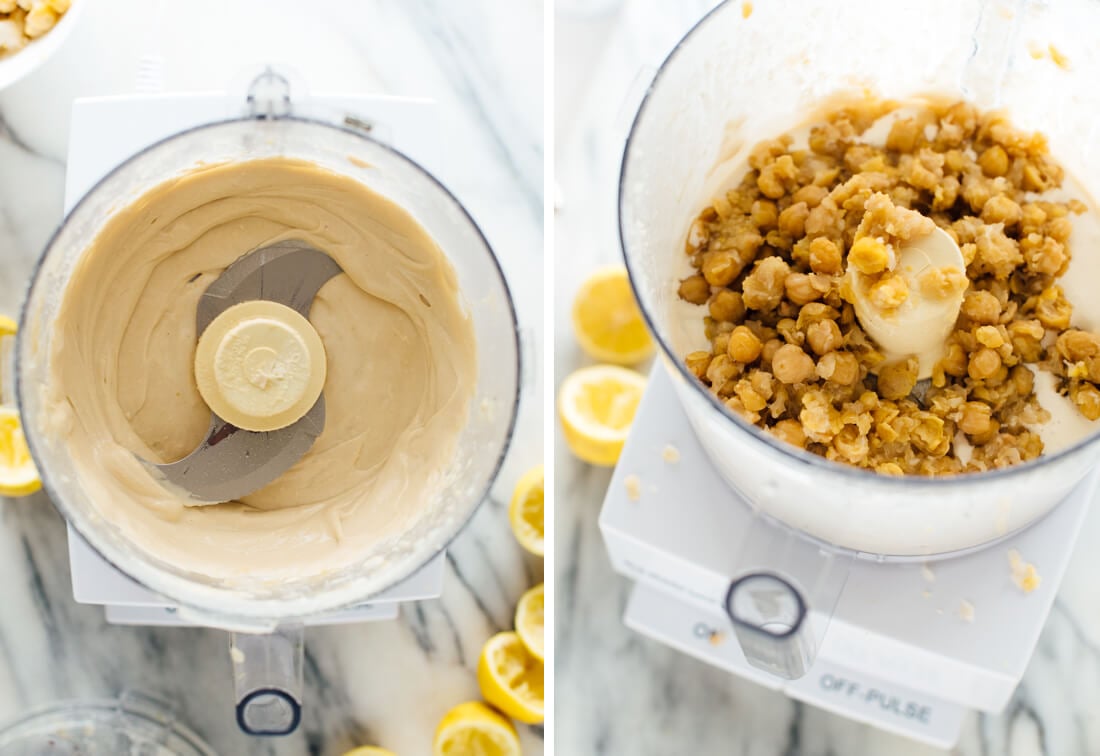
Overcooked chickpeas seemed like a promising idea to me. You see, I once tried to make hummus with canned chickpeas that were oddly undercooked, and they made terrible hummus. No matter how long I blended the hummus, those undercooked chickpeas never blended into creamy oblivion.
Plus, baking soda helps break down the chickpea skins, which means you do not need to peel off the skins individually. Who has time for that?! I bet you don’t have time to soak your chickpeas overnight and cook them from scratch like Solomonov, either.
You can see the difference that baking soda makes in the photo below. See how the chickpeas on the right are popping open more? They are significantly softer in texture as well.
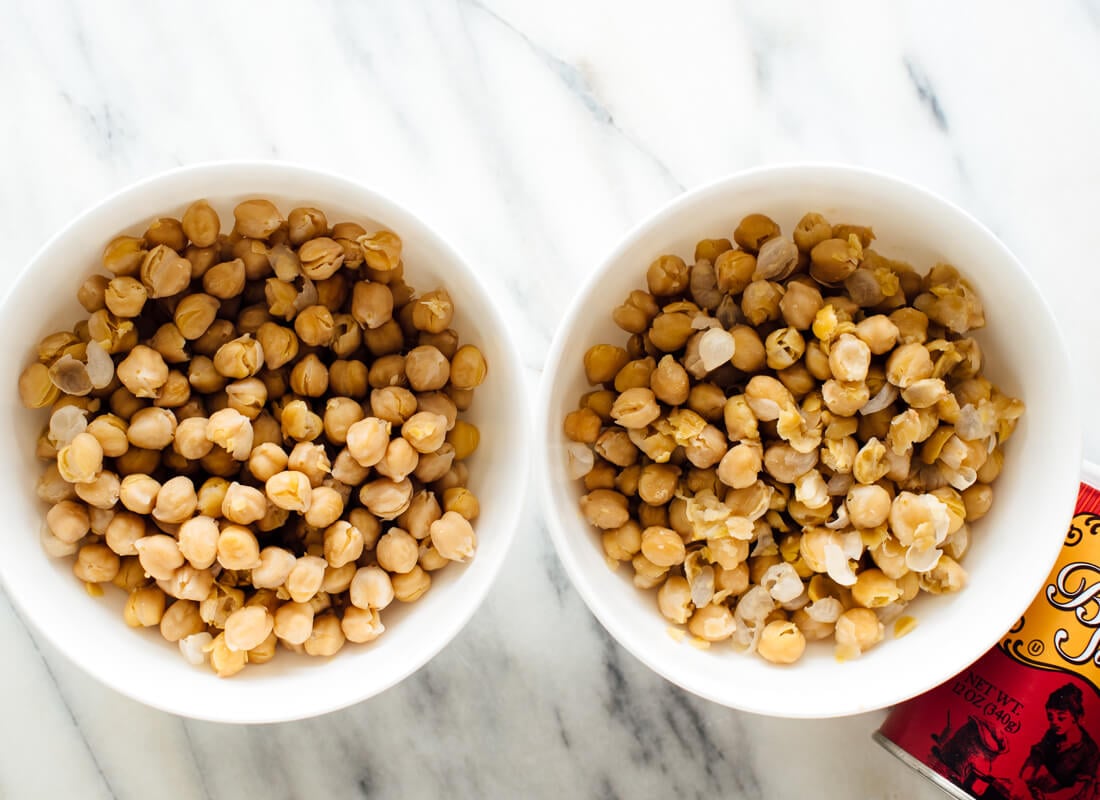
The chickpeas are ready to go after a quick rinse under cool running water, which rinses off the baking soda flavor and cools the chickpeas so your hummus doesn’t develop a weird outer film.
Are you as excited about this as I am?
I have a few more tips and techniques to making great hummus, so read on or scroll down for the full recipe and variations.
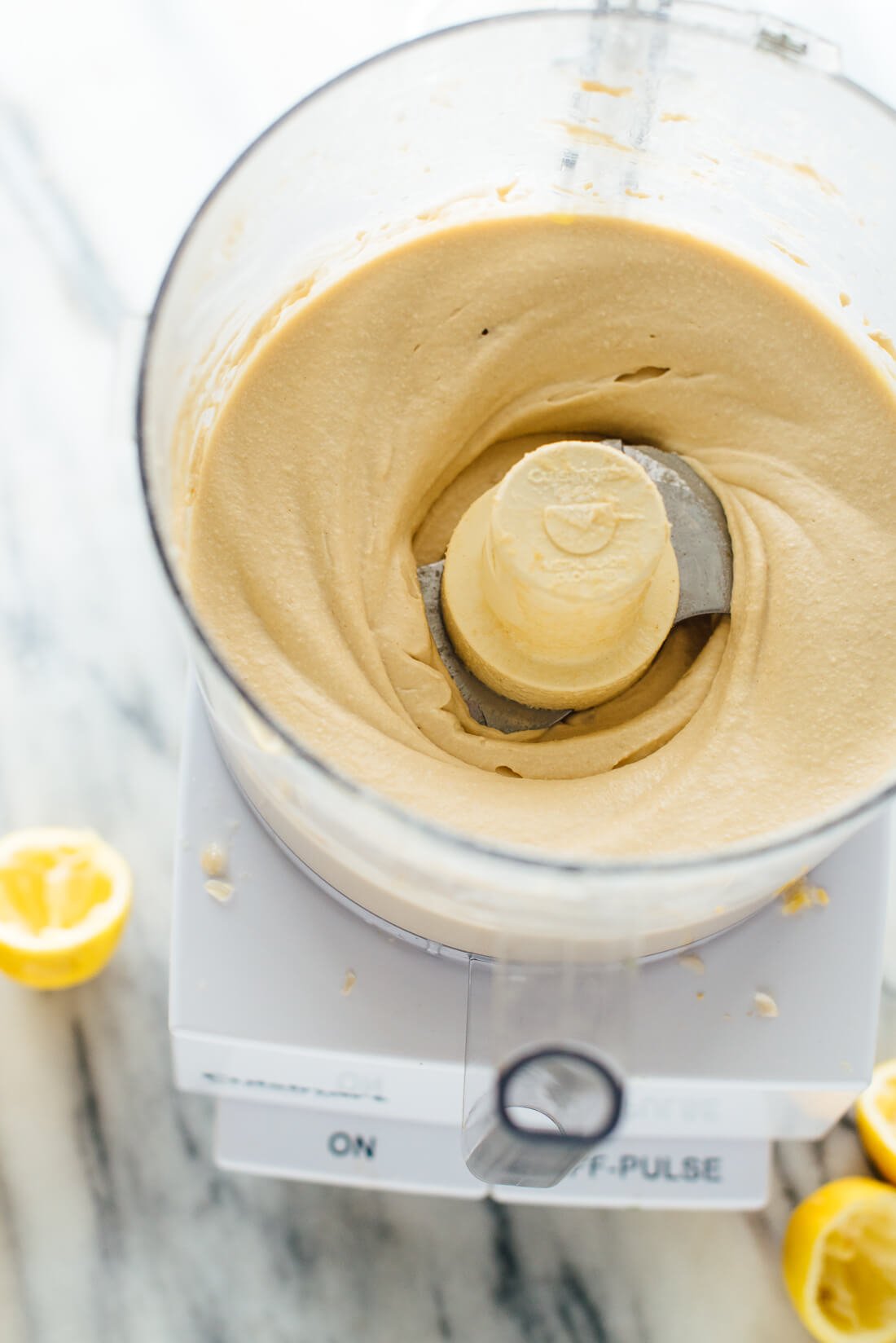
Cook canned or leftover cooked chickpeas according to step 1 below. This only adds 20 minutes to your hummus-making time, and it’s my number one tip for making perfect hummus at home.
You sure can—see the recipe notes.
I don’t recommend it—you’ll end up with a mess of chickpea mash clogging your vent and a puddle of chickpea cooking water surrounding your Instant Pot. I speak from experience.
All tahini is not created equally. When I was in Israel, Israelis’s spoke of tahini, or “t’hina,” with reverence. I learned that the best tahini comes from Ethiopia. Store-bought tahini in the U.S. varies widely in flavor, with some of them so bad that they’ve ruined my hummus.
I had to try Solomonov’s favorite, . I found it on Amazon (affiliate link) and I have to say that it is worth it. Second favorite? , which is made from Ethiopian sesame seeds like Soom’s. Whole Foods 365 used to be my go-to, but I encountered a few bad jars that tasted so bad, I’m afraid to try again.
—you need to use 1/2 cup tahini per can of chickpeas for rich and irresistible hummus. I once toured an enormous hummus production facility and learned that they often reduce the cost of producing store-bought hummus by using less tahini. Sneaky!
Why do you always want to mix ice-cold water with tahini? This is another trick that I learned on my trip. I can’t find a scientific explanation, but it seems to help make the hummus light and fluffy, and lightens the color of the tahini to a pale ivory color.
Store-bought lemon juice always tastes stale and sad, and it will make your hummus taste stale and sad. Buy lemons and your humus will taste fresh and delicious. I almost always add another tablespoon of lemon juice to my hummus for extra flavor before I plate it, but I’ll leave the tang factor up to you.
This is another trick from Solomonov—if you mince the garlic in the food processor or blender with the lemon juice and let that mixture rest for a few minutes, the garlic will lose its harsh, raw bite and mellow out. I tried it before and after, and he’s right! Here’s Serious Eats’ scientific explanation for why this works.
Solomonov doesn’t blend any olive oil into his hummus, but I think that one tablespoon makes the hummus taste even more luxurious and creamy. I recommend it!
The cumin is subtle and offers some “Je ne sais quoi,” if you will. It’s a common ingredient in plain hummus recipes, and makes the hummus taste a little more special.
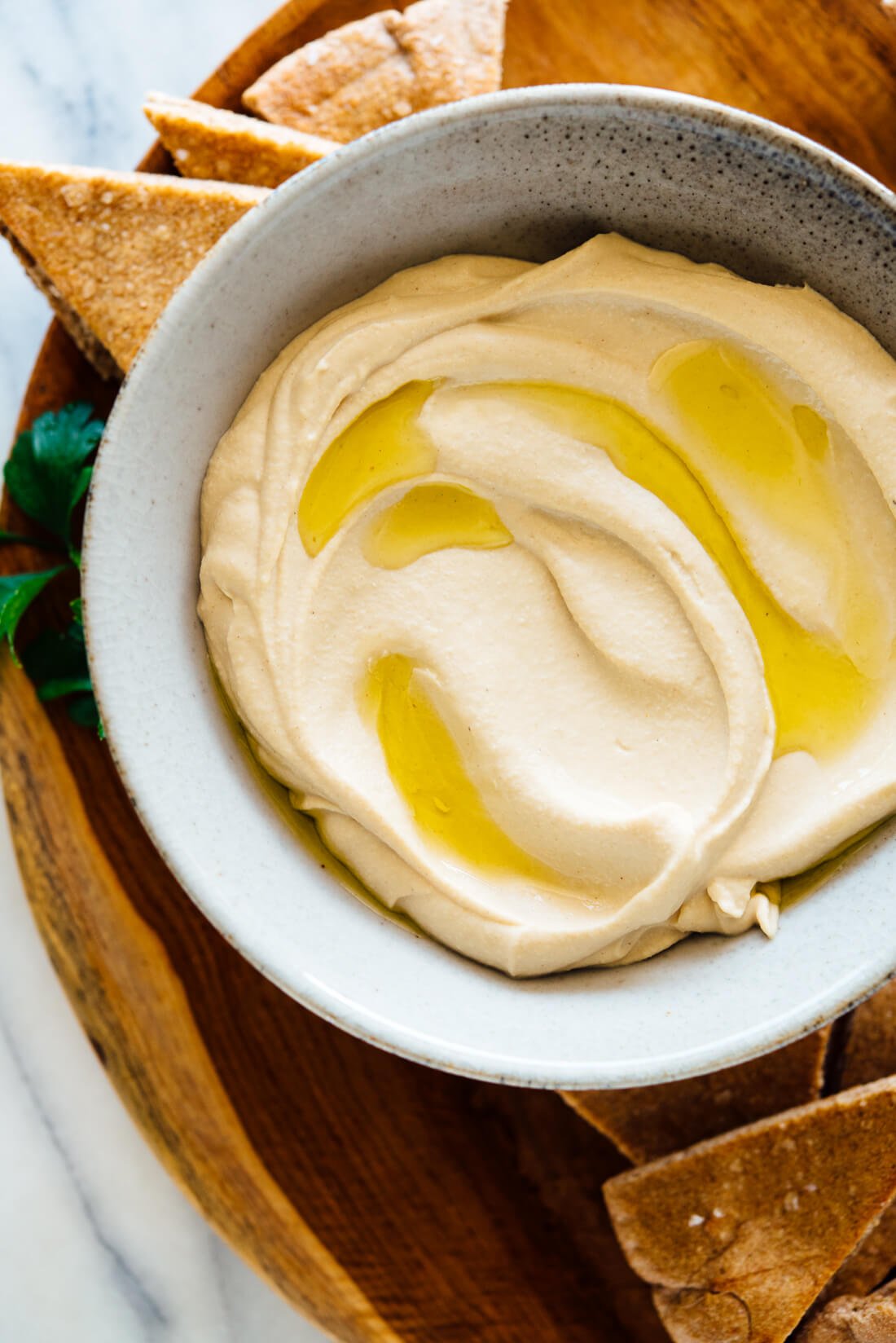
This hummus recipe is plain (and by plain, I mean delicious), but you can blend any of the following in with the chickpeas to make variations.
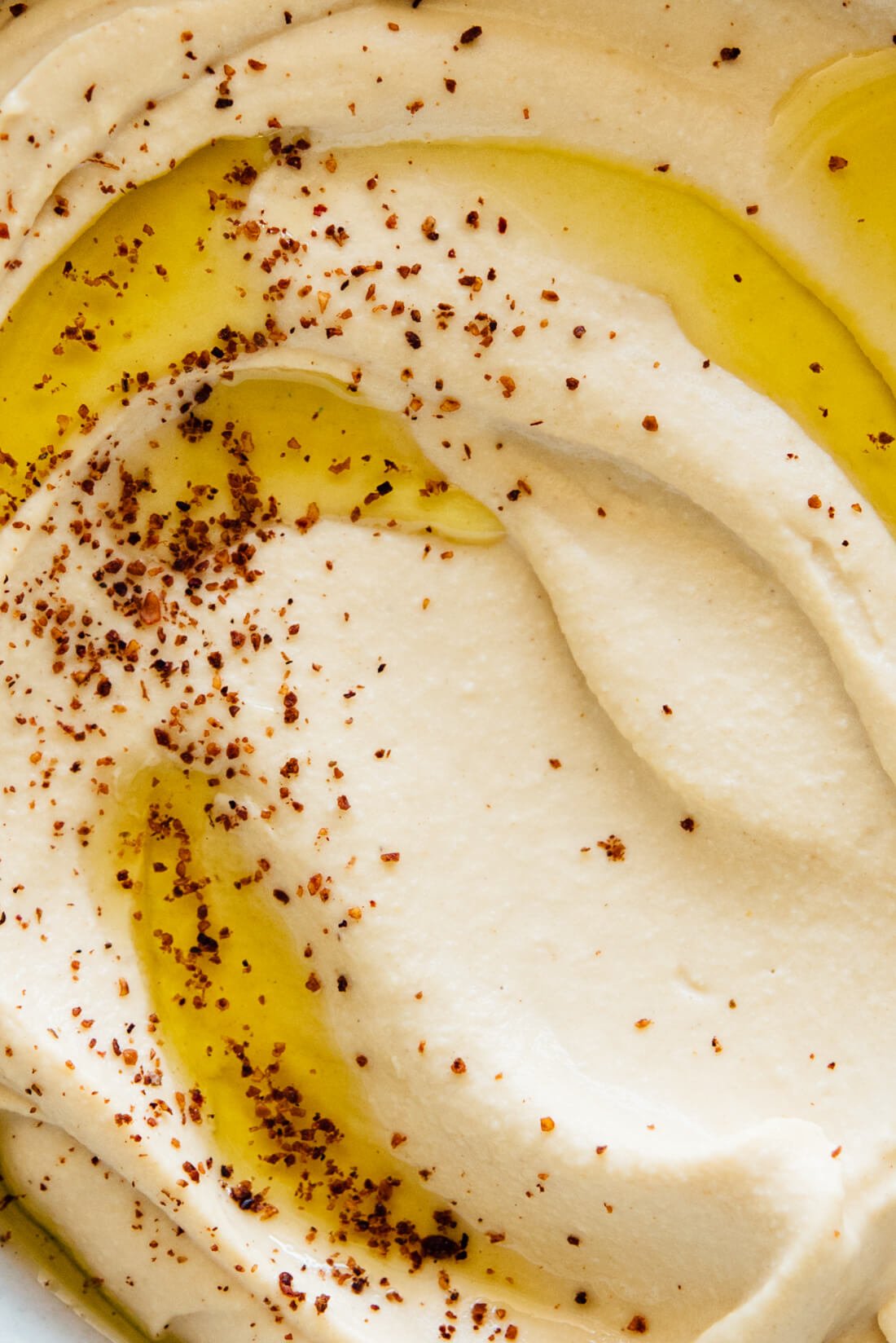
I’m dying to hear how this hummus turns out for you. Please let me know in the comments and tell me if overcooking your chickpeas makes all the difference!
You can also share a photo of your results on Instagram with the hashtag #cookieandkate so we can all see your results.
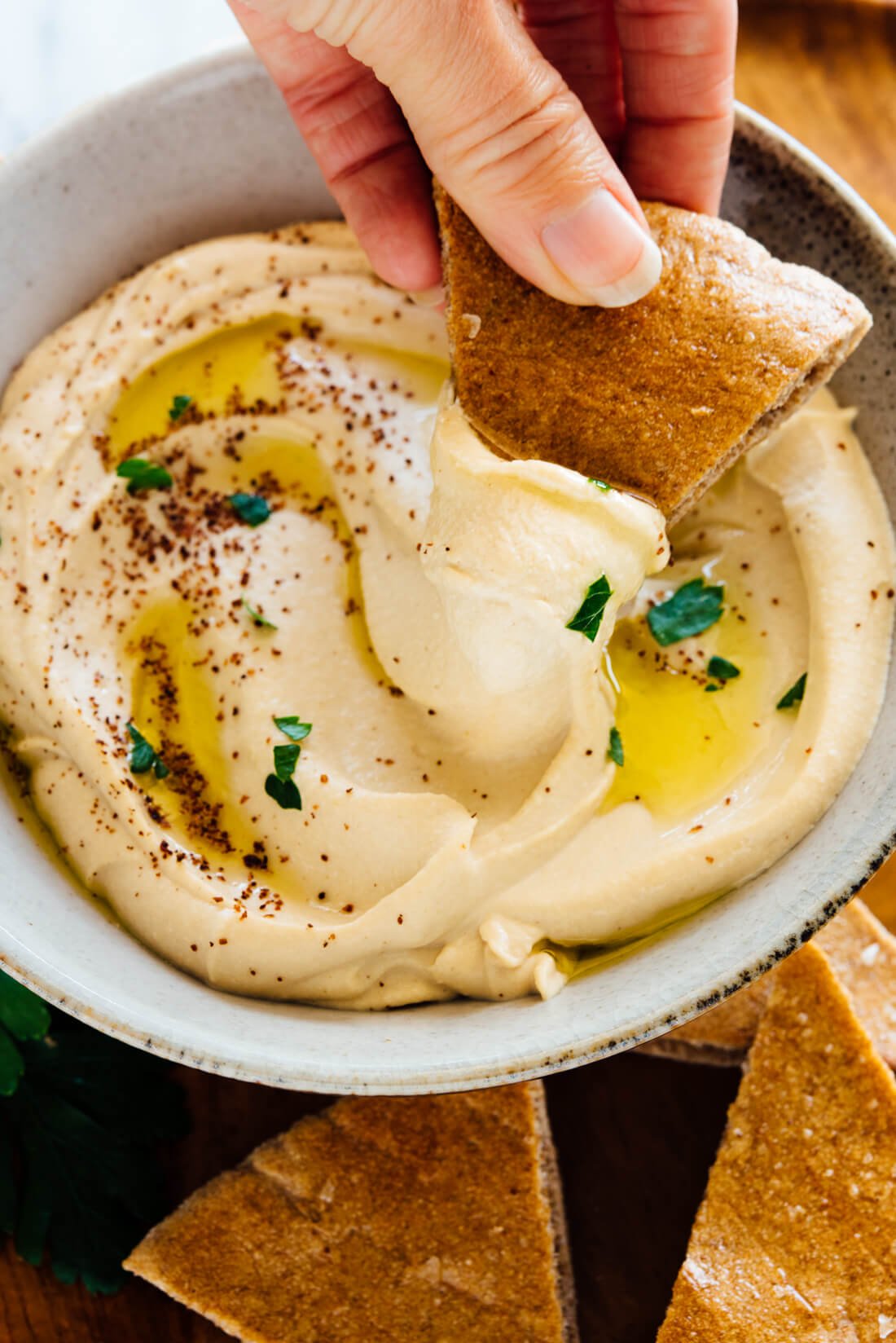
Learn how to make the best homemade hummus! It’s creamy, dreamy and light. This hummus recipe is easy to make—no peeling chickpeas or overnight soak required. Recipe yields about 2 cups.
- 2 to 4 tablespoons ice water, more as needed
- ½ teaspoon ground cumin
- 1 tablespoon extra-virgin olive oil
- Any of the following garnishes: drizzle of olive oil or zhoug sauce, sprinkle of ground sumac or paprika, chopped fresh parsley
Recipe adapted from Michael Solomonov, via The New York Times and Bon Appetit, and Yotam Ottolenghi.
In a large saucepan, combine 5 ounces (¾ cup) dried chickpeas and ½ teaspoon baking soda, and fill the pot with water. Bring the mixture to a boil over high heat and skim off the surface foam as needed. Continue boiling over medium-high, adding more water if you start running out, until the chickpeas are very mushy and falling apart, about 1 hour to 1 hour 15 minutes. Drain in a fine-mesh colander, rinse under cool running water, and drain well before using. Start the recipe at step 2.
The information shown is an estimate provided by an online nutrition calculator. It should not be considered a substitute for a professional nutritionist’s advice. See our full nutrition disclosure here.
Filed Under: appetizers, dairy free, dips, egg free, fall, favorites, fundamentals, Game Day, gluten free, hummus, Independence Day, Mediterranean, Middle Eastern, nut free, pantry friendly, recipes, sauces & condiments, snacks, soy free, spring, summer, tomato free, vegan, winter

HELLO, MY NAME IS
I'm a vegetable enthusiast, dog lover, mother and bestselling cookbook author. I've been sharing recipes here since 2010, and I'm always cooking something new in my Kansas City kitchen. Cook with me!










